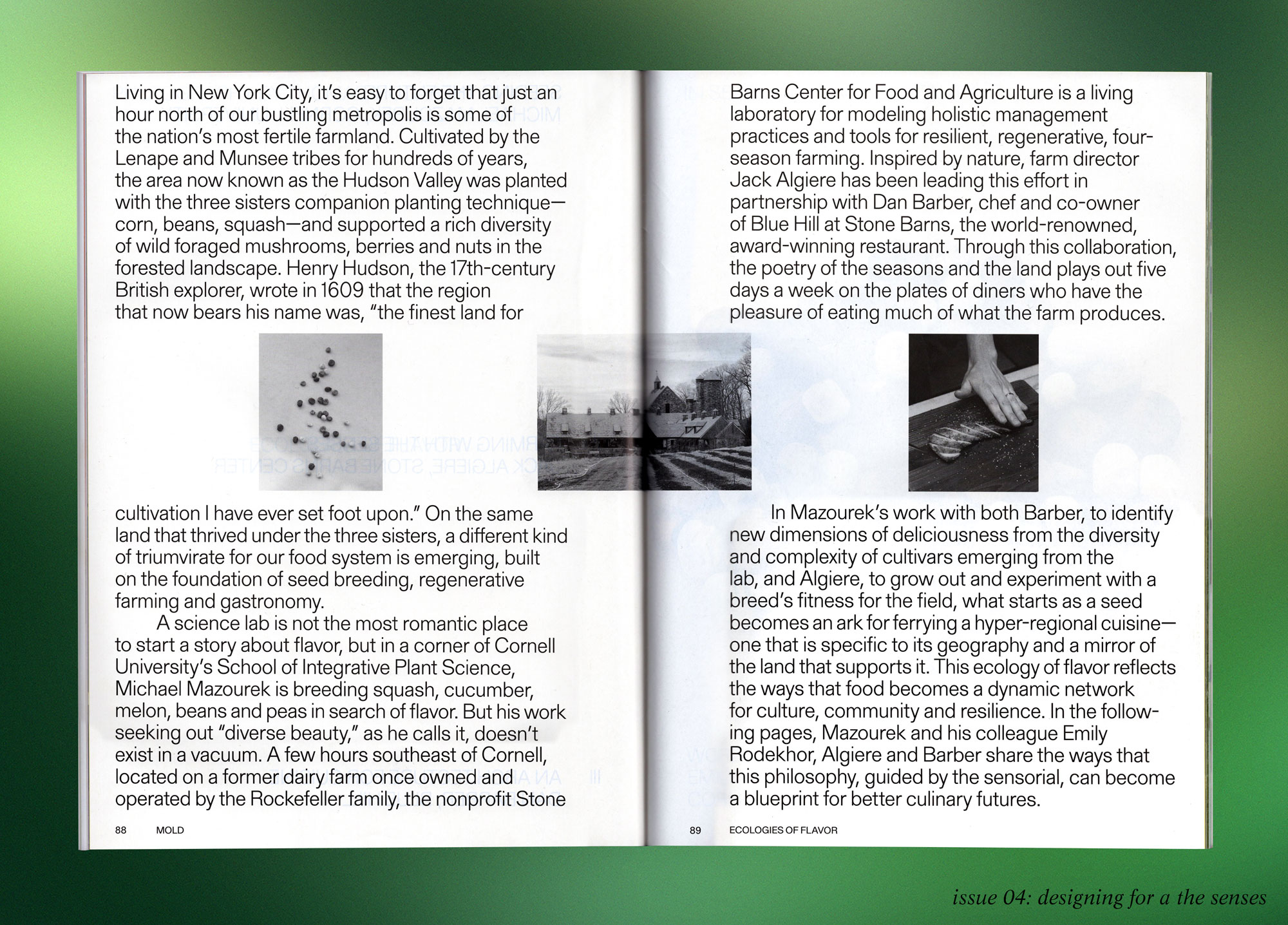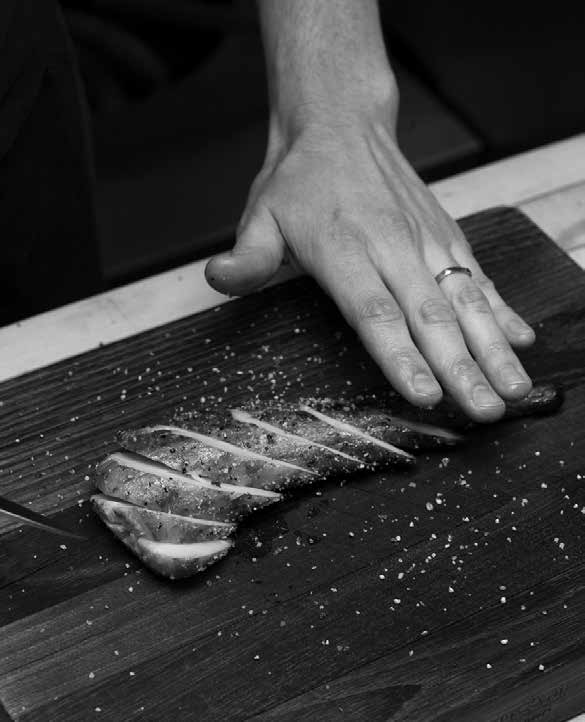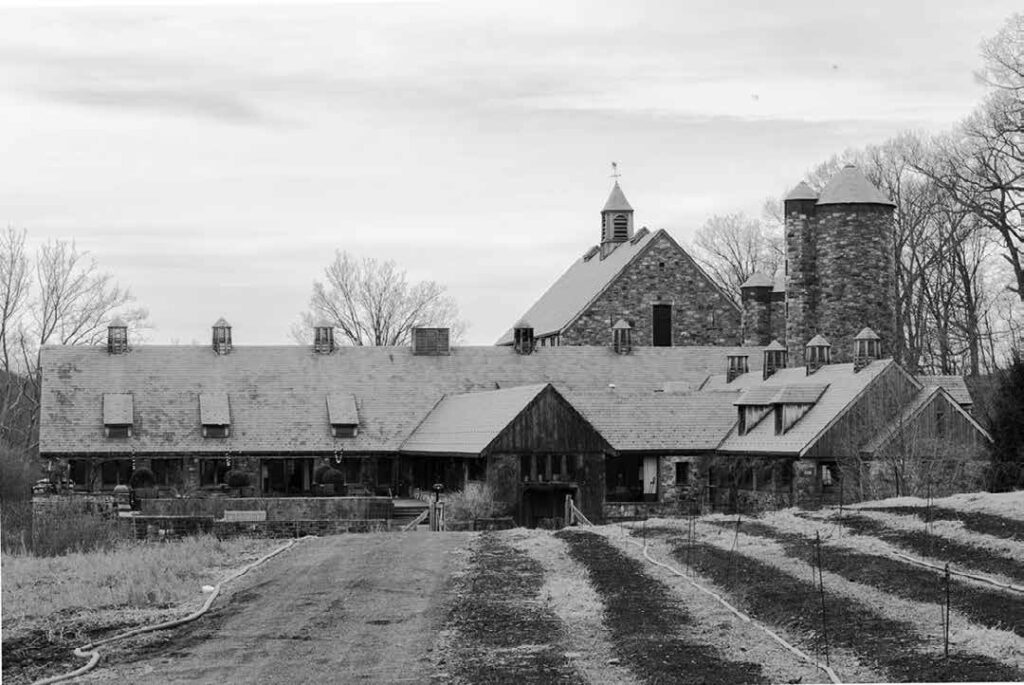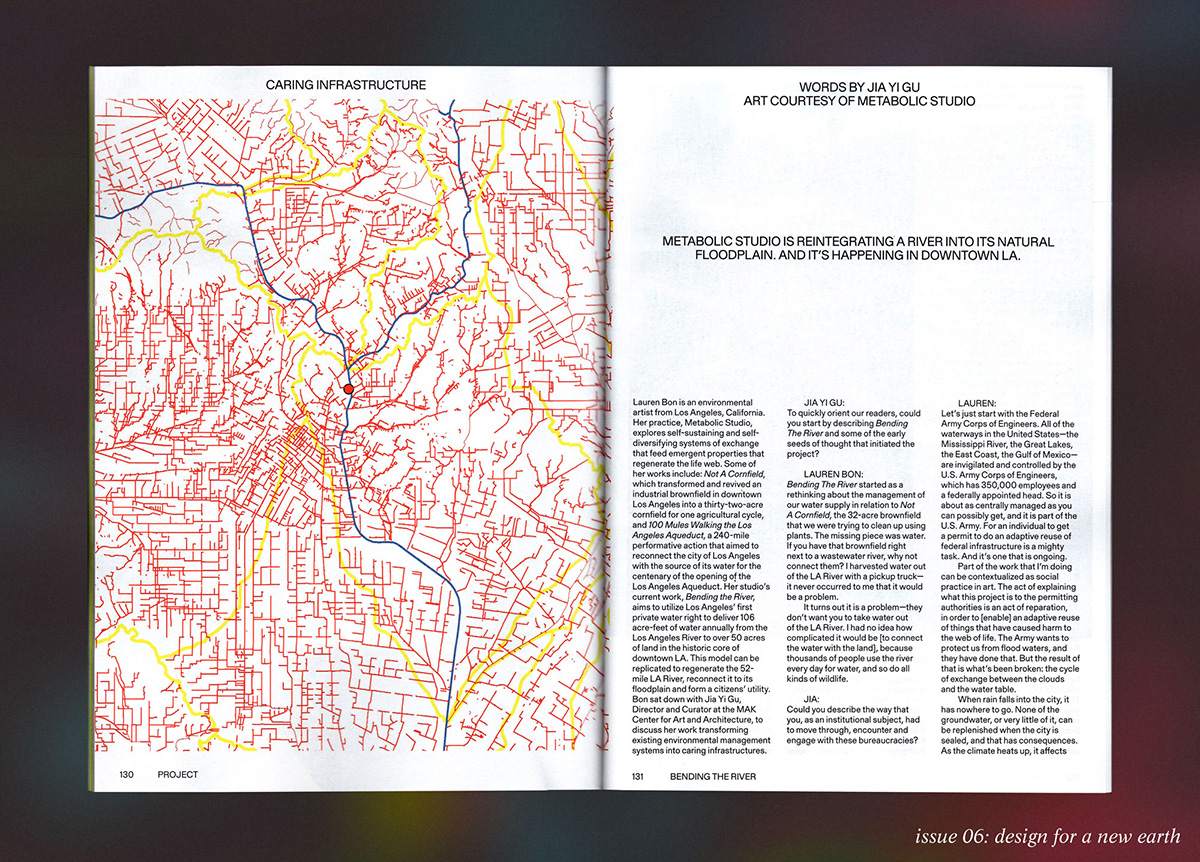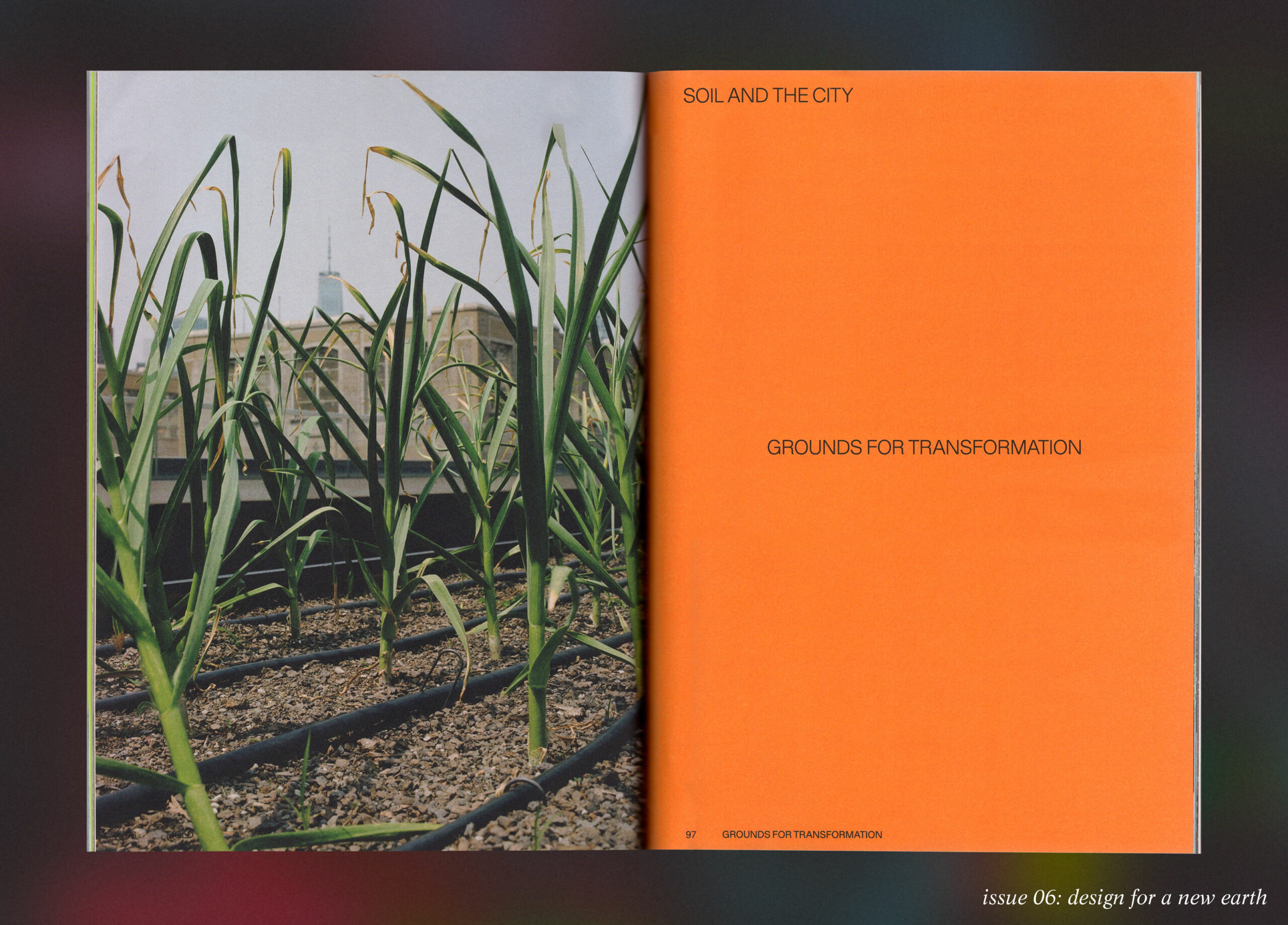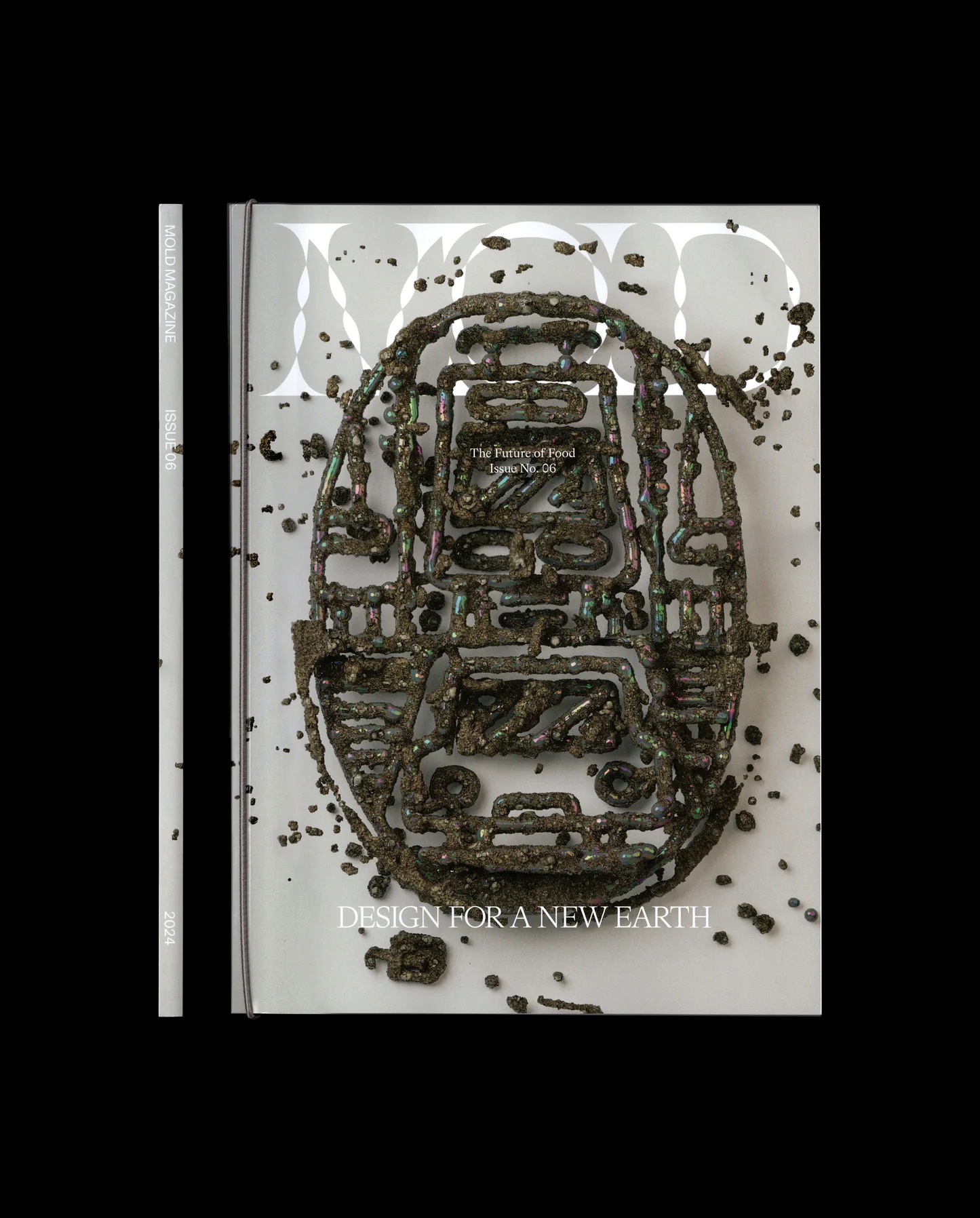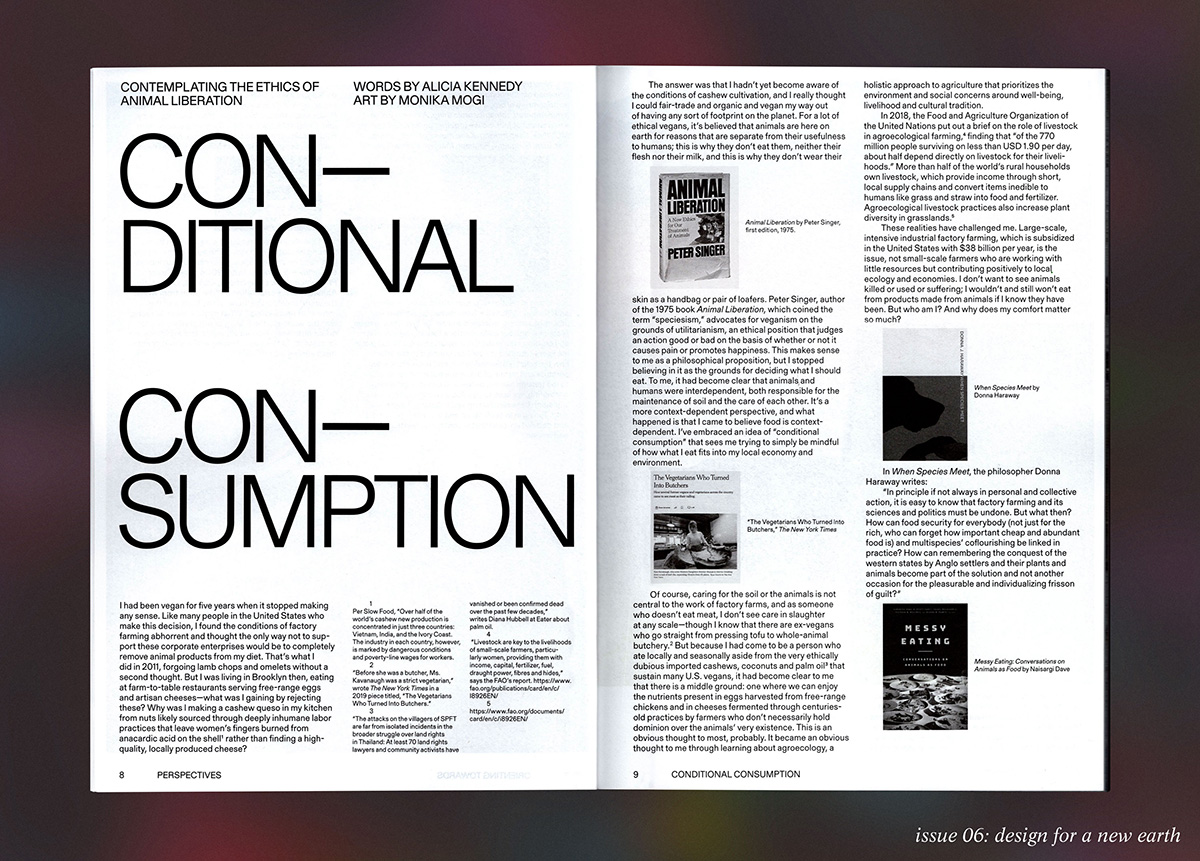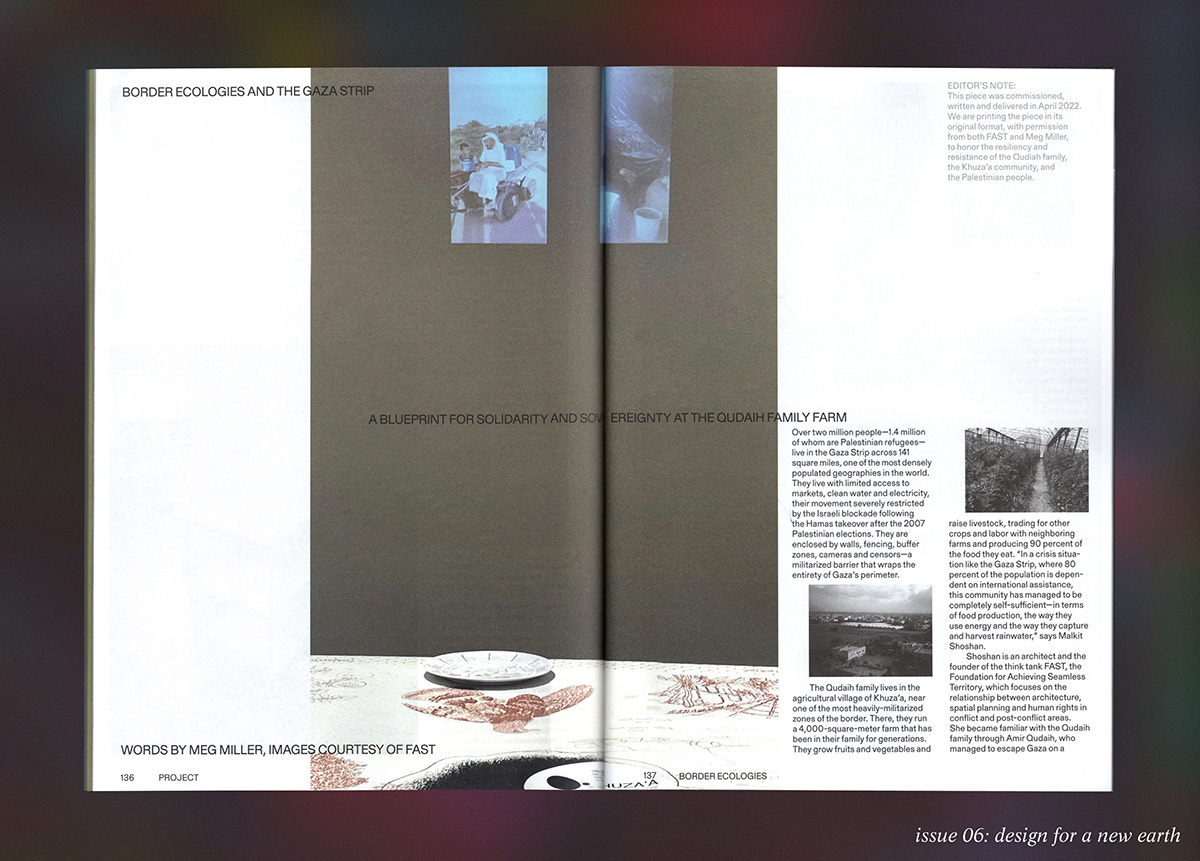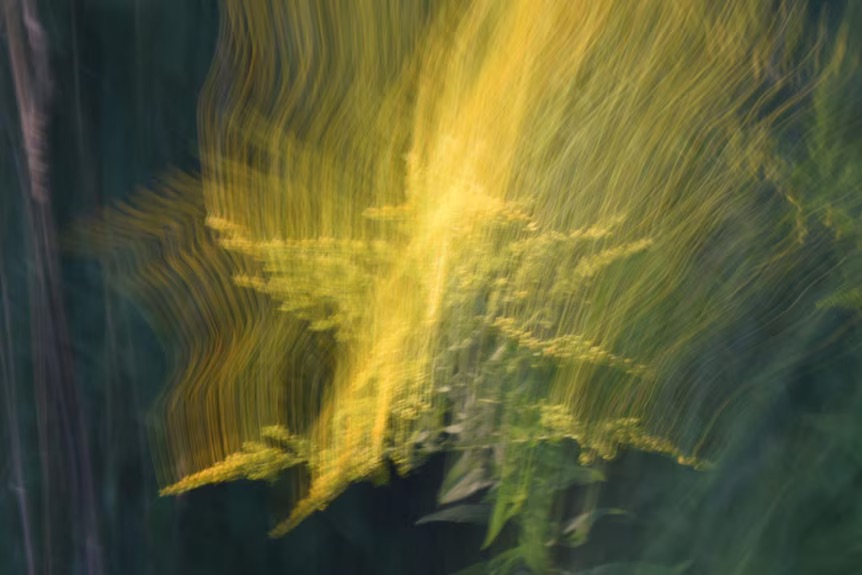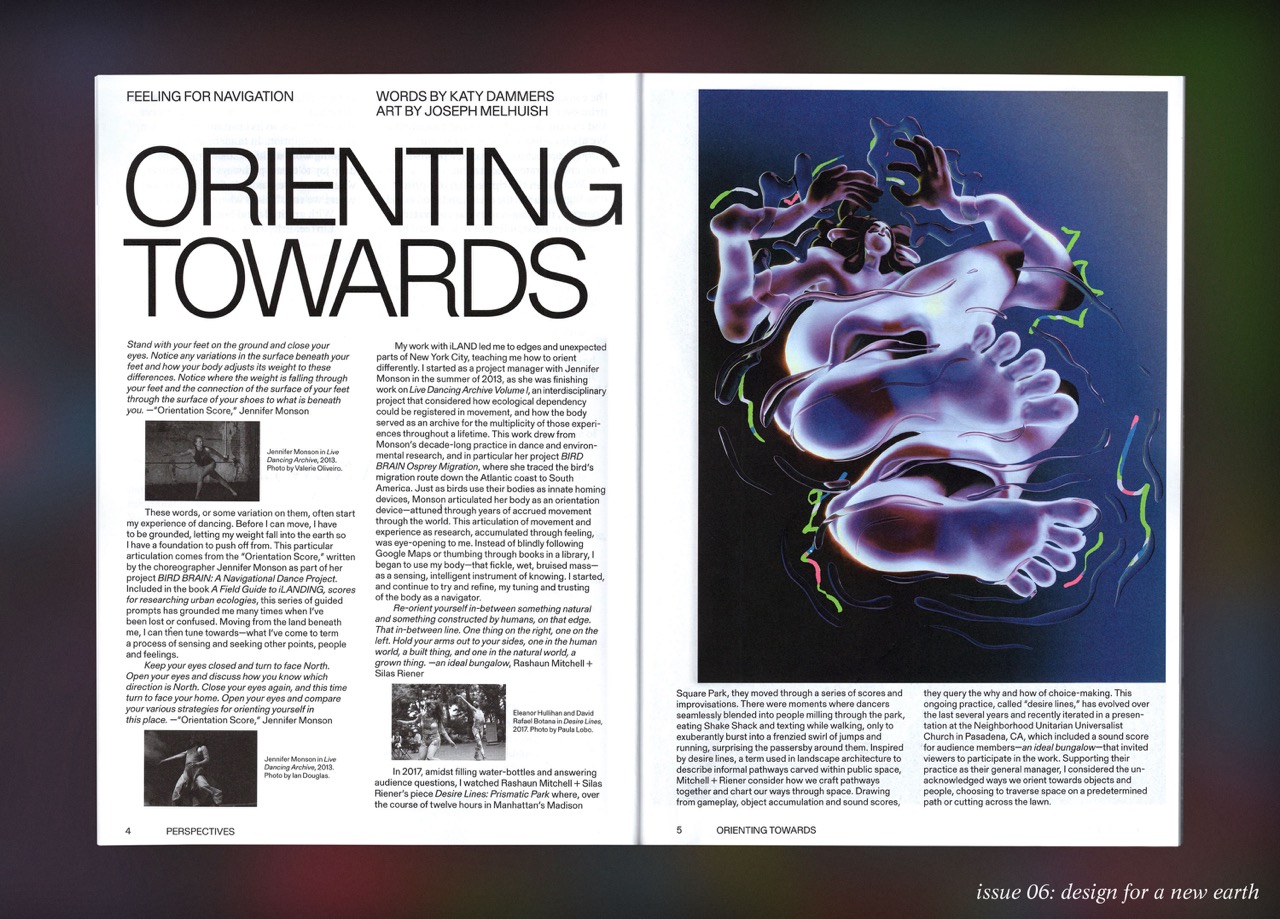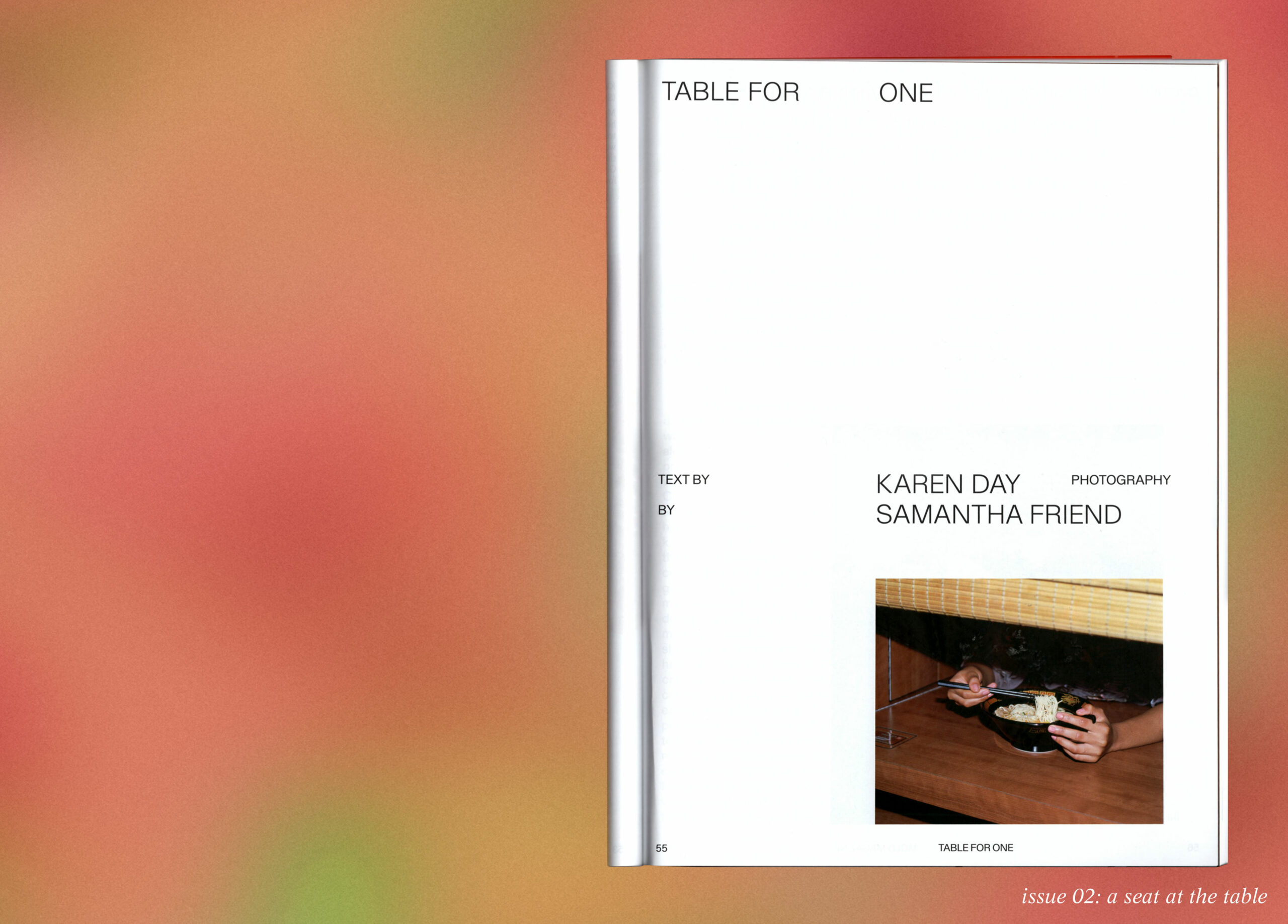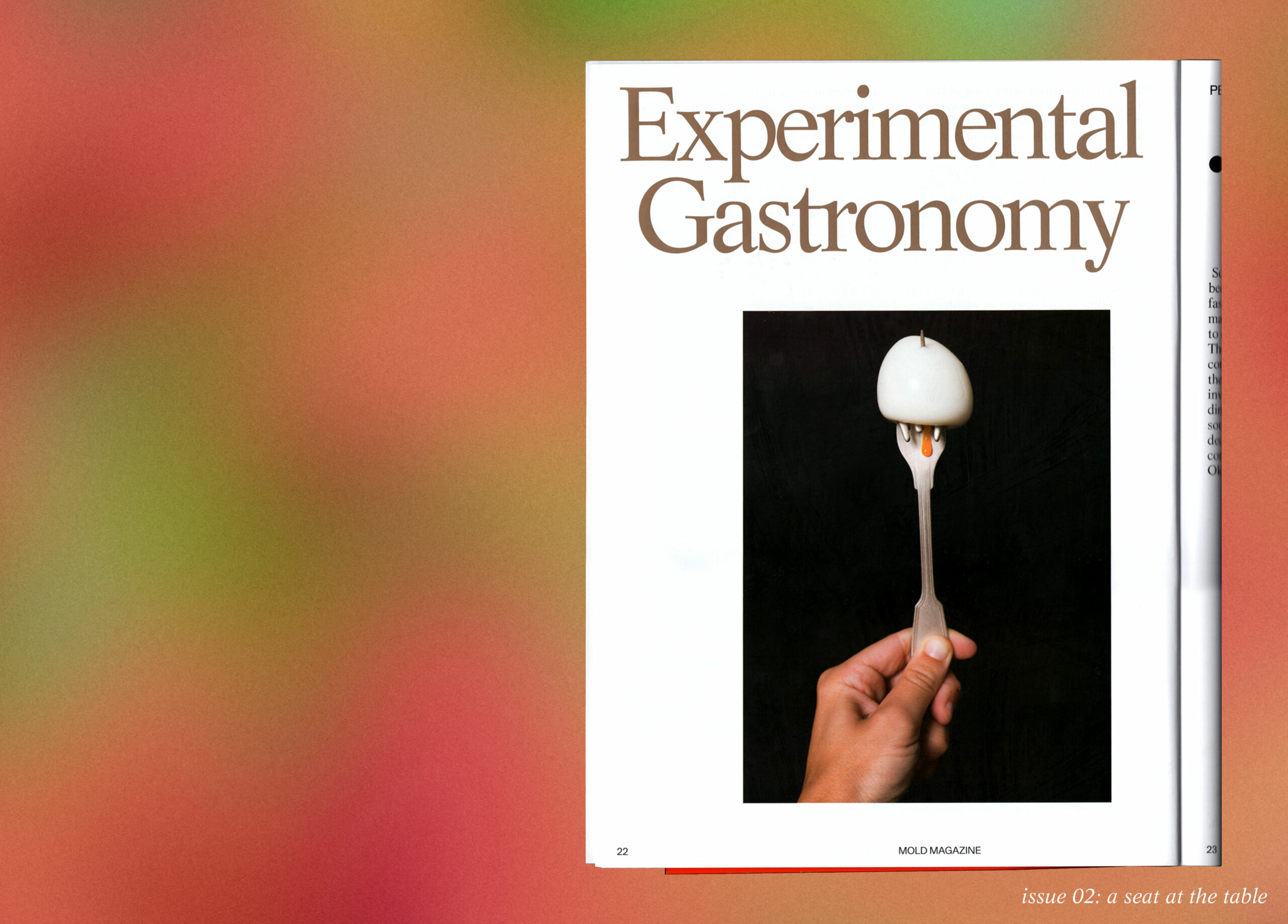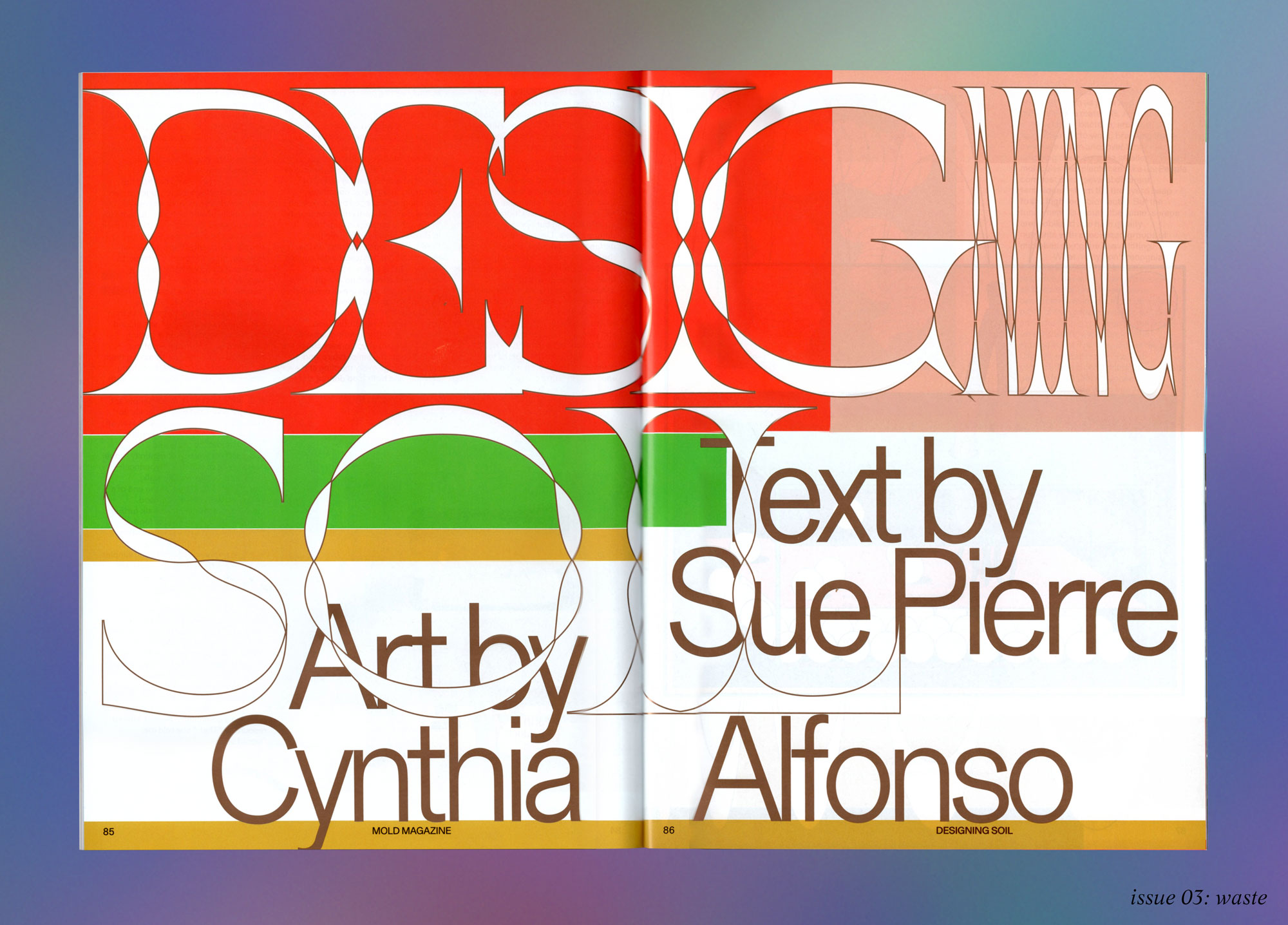From MOLD Magazine: Issue 04, Designing for the Senses. Order your limited edition issue here.
Living in New York City, it’s easy to forget that just an hour north of our bustling metropolis is some of the nation’s most fertile farmland. Cultivated by the Lenape and Munsee tribes for hundreds of years, the area now known as the Hudson Valley was planted with the three sisters companion planting technique—corn, beans, squash—and supported a rich diversity of wild foraged mushrooms, berries and nuts in the forested landscape. Henry Hudson, the 17th-century British explorer, wrote in 1609 that the region that now bears his name was, “the finest land for cultivation I have ever set foot upon.” On the same land that thrived under the three sisters, a different kind of triumvirate for our food system is emerging, built on the foundation of seed breeding, regenerative farming and gastronomy.
Photography by Thomas McCarty for MOLD Magazine.
A science lab is not the most romantic place to start a story about flavor, but in a corner of Cornell University’s School of Integrative Plant Science, Michael Mazourek is breeding squash, cucumber, melon, beans and peas in search of flavor. But his work seeking out “diverse beauty,” as he calls it, doesn’t exist in a vacuum. A few hours southeast of Cornell, located on a former dairy farm once owned and operated by the Rockefeller family, the nonprofit Stone Barns Center for Food and Agriculture is a living laboratory for modeling holistic management practices and tools for resilient, regenerative, four-season farming. Inspired by nature, farm director Jack Algiere has been leading this effort in partnership with Dan Barber, chef and co-owner of Blue Hill at Stone Barns, the world-renowned, award-winning restaurant. Through this collaboration, the poetry of the seasons and the land plays out five days a week on the plates of diners who have the pleasure of eating much of what the farm produces.
In Mazourek’s work with both Barber, to identify new dimensions of deliciousness from the diversity and complexity of cultivars emerging from the lab, and Algiere, to grow out and experiment with a breed’s fitness for the field, what starts as a seed becomes an ark for ferrying a hyper-regional cuisine—one that is specific to its geography and a mirror of the land that supports it. This ecology of flavor reflects the ways that food becomes a dynamic network for culture, community and resilience. In the following pages, Mazourek and his colleague Emily Rodekhor, Algiere and Barber share the ways that this philosophy, guided by the sensorial, can become a blueprint for better culinary futures.
I. SEEDING THE FUTURE by MICHAEL MAZOUREK and EMILY RODEKHOR, CORNELL UNIVERSITY
II. FARMING WITH THE SENSES by JACK ALGIERE, STONE BARNS CENTER
III. AN ARCHITECTURE FOR CUISINE DAN BARBER, BLUE HILL
